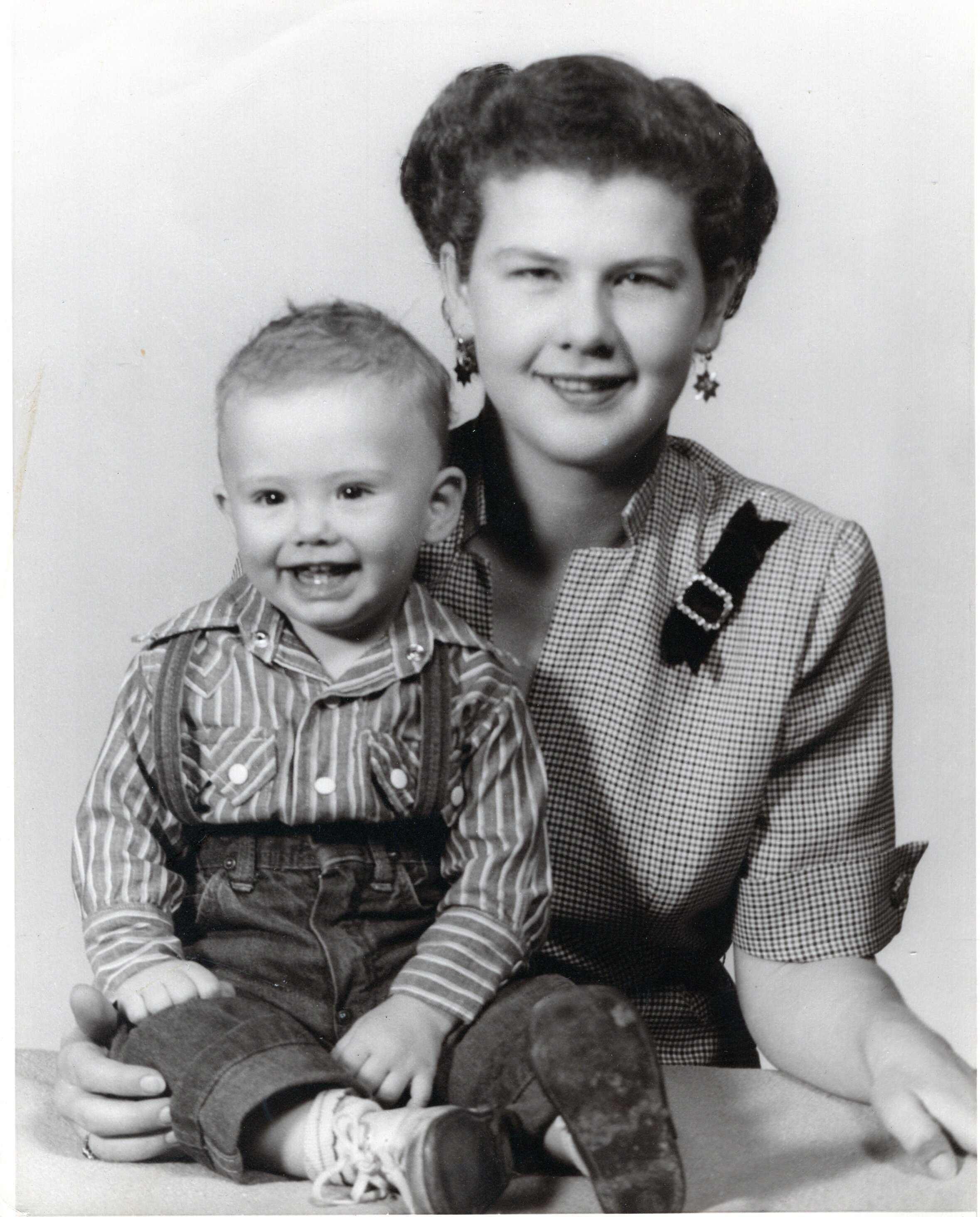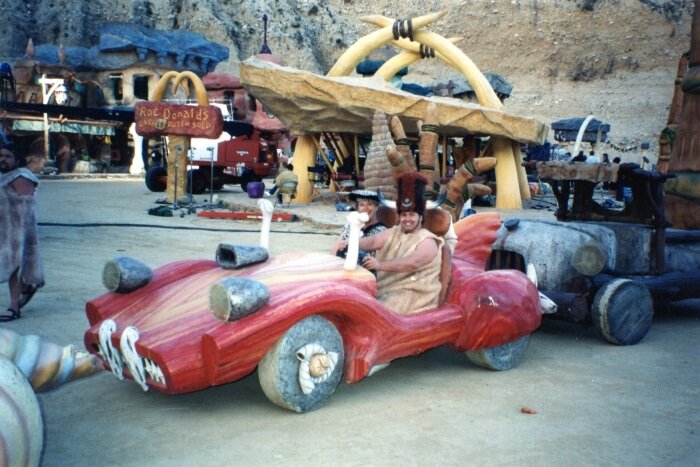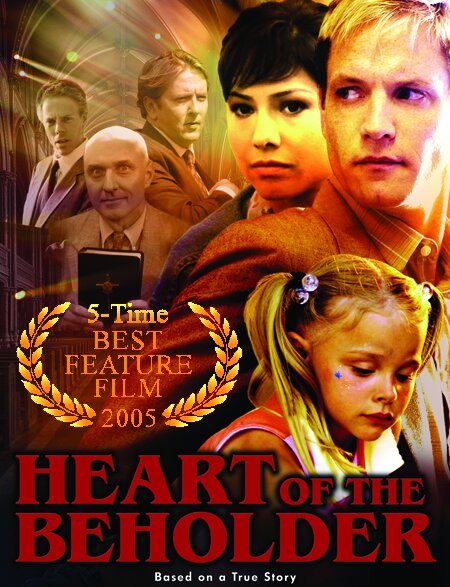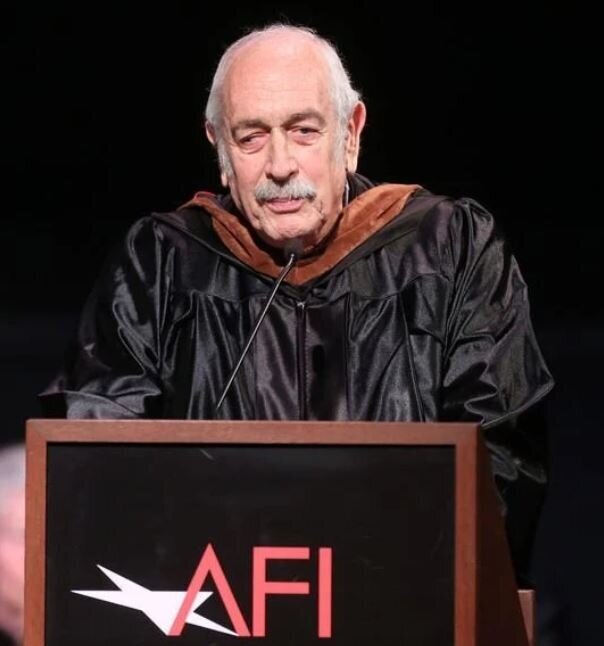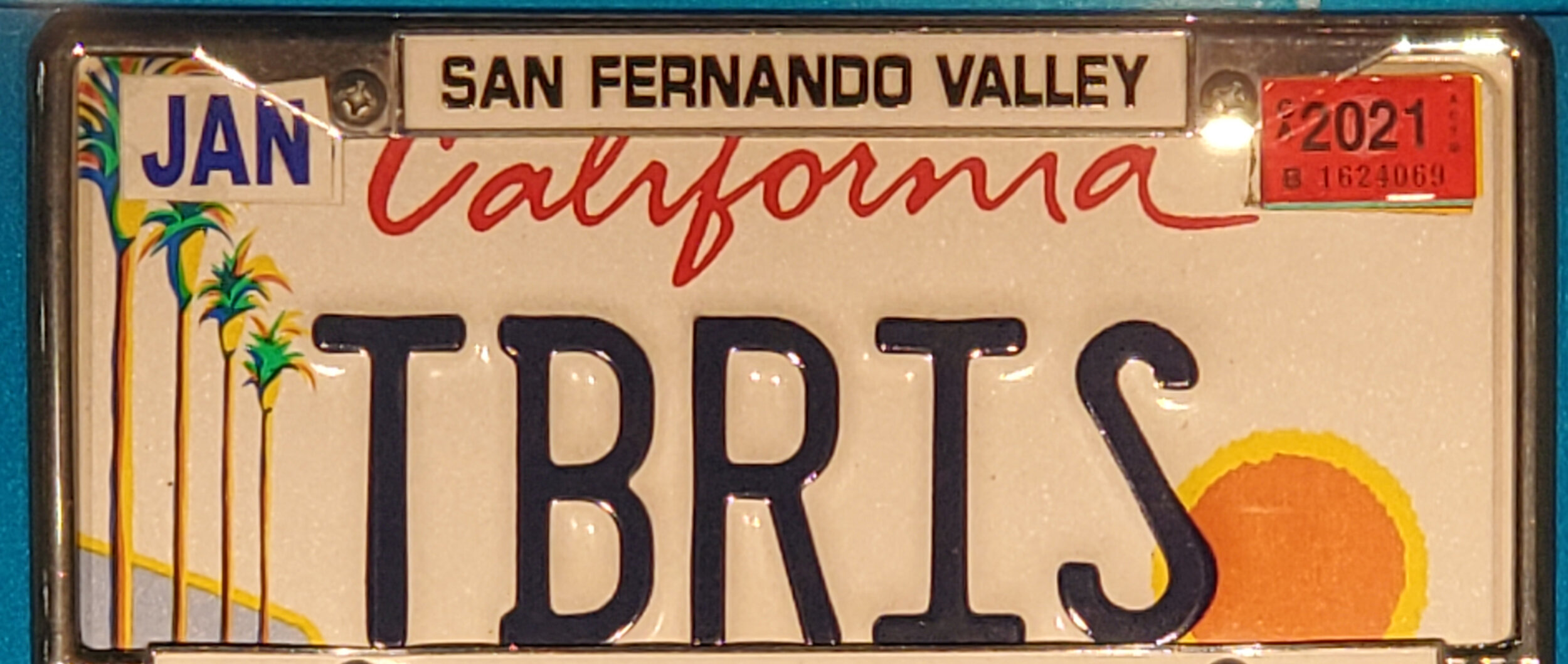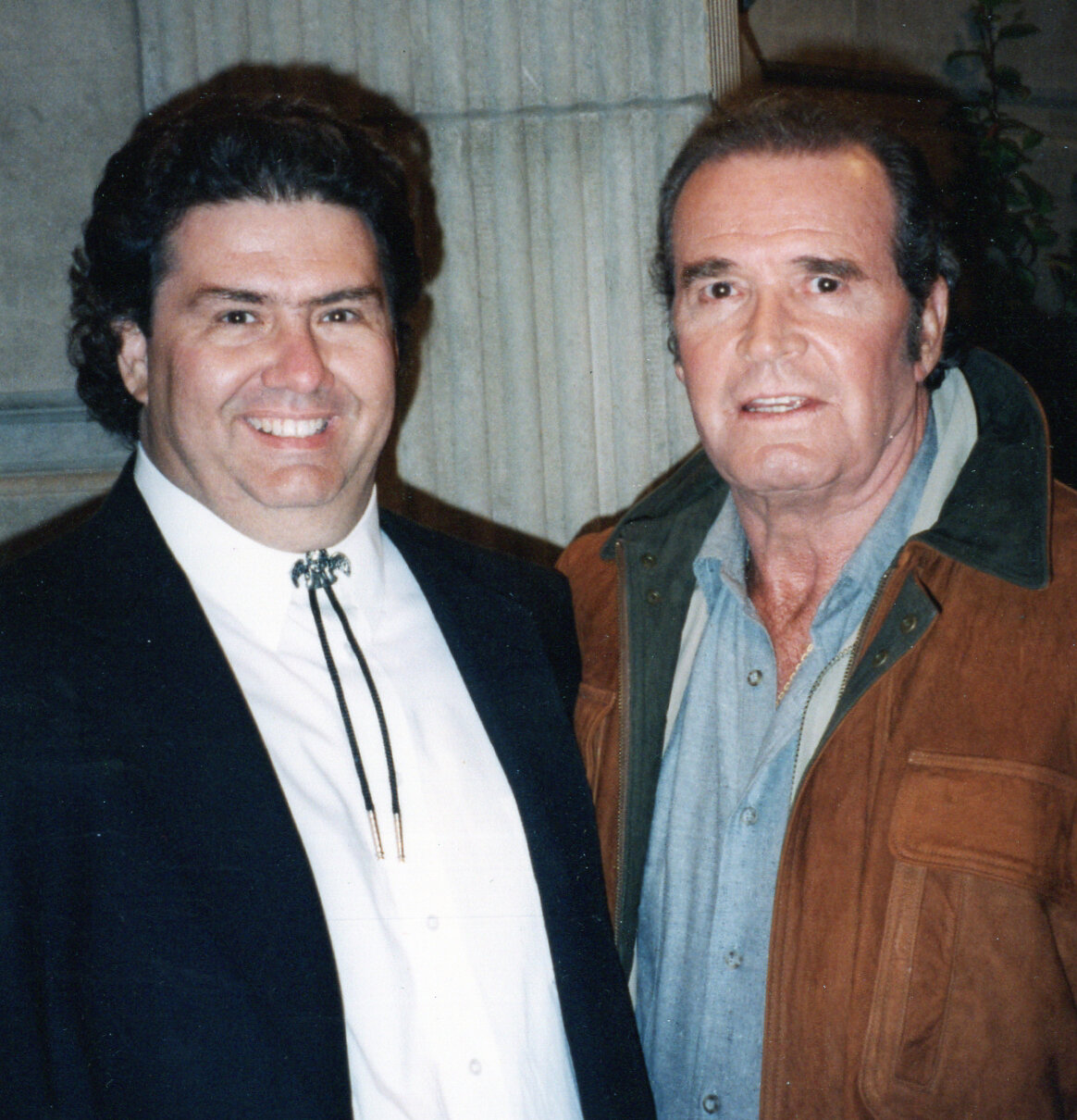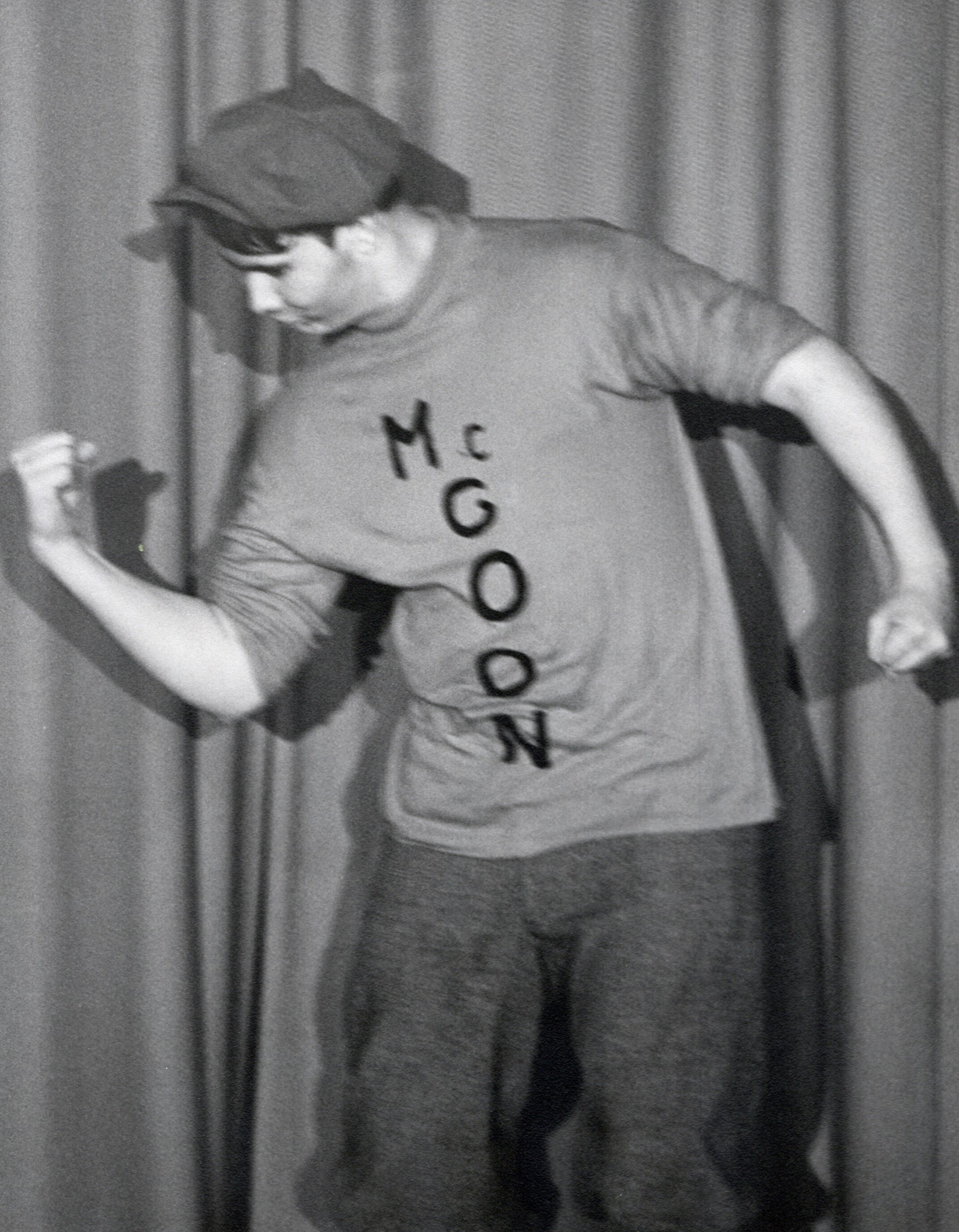Ken Tipton - Biography
Ken Tipton was born in El Paso, Texas in 1952. In 1954, Ken's stepfather was discharged from the Air Force and moved the family to Columbia, MO, to attend the University of Missouri "Mizzou” on the GI Bill. At the age of 4, Ken began his lifelong journey as an entrepreneur when he learned that entertainment could provide an income. Ken’s mother made a cute Tiger costume for him, complete with a tail and “Tiger Cub” across the chest in support of the Mizzou Tigers football team. On game days, Ken would sing the Tiger fight song as students walked to the stadium past his on-campus apartment, which used to be barracks for the military in World War II. Ken would sing his heart out as he marched back and forth high-stepping and wielding a butterfly net handle like the drum major that led the pep club band. All manner of coins were tossed, which Ken and his mom would catch in their butterfly nets. The extra money supplemented his family's income. In 1958, the family moved to St. Charles, MO, located 23 miles from downtown St. Louis on the western bank of the Missouri River.
IBM 1800 - 12’ x 7’ and over a ton.
As Ken grew up, his entrepreneurial experience continued. He sold Mason Shoes, kitchen pots and pans sets, and various greeting cards door to door, as well as just about anything else advertised in the back of the Boy Scout magazine called “Boys Life”. A paper route followed, along with numerous retail and restaurant jobs. In the winter, he would shovel snow from driveways, and in the summer, he would cut people’s grass, pick strawberries at local farms, and scoop up lost golf balls at area courses with ponds using goggles and a butterfly net.
As Ken grew up, his entrepreneurial experience continued. He sold Mason Shoes, kitchen pots and pans sets, and various greeting cards door to door, as well as just about anything else advertised in the back of the Boy Scout magazine called “Boys Life”. A paper route followed, along with numerous retail and restaurant jobs. In the winter, he would shovel snow from driveways, and in the summer, he would cut people’s grass, pick strawberries at local farms, and scoop up lost golf balls at area courses with ponds using goggles and a butterfly net.
After high school, Ken attended the University of Missouri before enlisting in the Air Force. Ken had three years of high school Air Force ROTC and was the Commander his senior year. Because of his prior ROTC experience, he was given his first stripe before starting Basic Training. Ken was trained as an airborne electronic navigation specialist with a secret clearance. His job allowed Ken to travel the world in a military airlift squadron. After his tour in the Air Force ended, he returned to St. Louis to work for IBM as a computer engineer.
Business Man
Ken has an unstoppable entrepreneurial spirit. While still employed at IBM, he turned his love of flying into an aerial advertising company called HIGH SIGNS, which used a powered hang-glider. Gordon Gundaker, a prominent realtor in St. Louis, was Ken’s best customer. Gordon hired Ken to fly over all Mizzou football games, regardless of their location, with the words "GUNDAKER REALTY" in black tape on the massive wings. Many times Ken could not fly due to weather, but he was paid regardless. Ken’s unusual-looking ultralight aircraft would captivate the crowds by flying low and slow. He would then turn the craft into the wind and expertly trim the controls just right to allow him to actually freeze in midair. Fifty to seventy-five thousand spectators would all watch Ken’s advertising UFO sit motionless in the blue sky and would cheer and wave as Ken waved his Tiger flags with both hands. Ken and his wife Darlene now fly ultralight trikes and gyrocopters.
Ken, a passionate movie enthusiast, opened VIDEO LIBRARY in 1980 while still employed at IBM. VIDEO LIBRARY was the first VHS-only home videocassette movie rental store in the United States, at a time when other stores only carried Beta-max home videos. Ken's decision to choose VHS over Beta seemed risky because most people owned Beta VCRs (Video Cassette Recorders), leaving him with little customer base. However, his business was saved by rock and roll legend Chuck Berry, who had a compound 26 miles west of St. Charles and had just purchased a $1900 VHS VCR. Ken's store in St. Charles, MO was the only VHS video store around and it happened to be on the way to Chuck’s home at “Berrytown” in Wentzville, MO. Chuck rented 30 movies for 30 days and became a regular customer, which helped keep Ken's business afloat. Fortunately, Ken's perseverance paid off when hundreds of people bought new VHS VCRs that Christmas. (In Ken’s movie, “Heart of the Beholder”, Chuck Berry was portrayed by the star of “CANDYMAN”, Tony Todd.)
With hard work, Video Library grew into a multi-million-dollar company consisting of video stores, franchises, and stand-alone robotic video kiosks called “Movie Machines”. The Movie Machines were the first-ever videocassette vending machines and were invented by Ken and his partners. The kiosks offered video movie rentals 24/7 with no employees and were sold in many states. Ken added pizza operations to his stores with pick-up and delivery, as well as video delivery under his Movies-to-Go service. Decades before Uber Eats, DoorDash, or Grubhub, Ken added pickup and delivery of food from local restaurants and grocery stores.
Other businesses Ken owned were Paintball Wargames and Bushwackers Paintball, which were very popular with corporations that used the game as a team-building exercise. They operated out of the now-closed St. Charles Speedway and in Wentzville, MO, where they were constantly booked because the next nearest paintball field was over 70 miles away in Illinois.
Video Library was the first VHS Only video store to open in the U.S.
The first stand-alone video vending Movie Machine.
Paintball Wargames at the St. Charles Speedway
Family
Ken lost his multi-million dollar video chain, Movie Machines, and paintball parks after he was bankrupted and divorced because he refused to comply with Rev. Donald Wildmon’s religious censorship group called the National Federation for Decency. The NFD demanded that Ken, and all video stores, remove Martin Scorsese’s controversial film “The Last Temptation of Christ” from their shelves. Ken fought hard against the censorship, winning two court cases, but still lost everything. For more details, see the next section on HOLLYWOOD.
In 1993, St. Louis experienced the "flood of the century." Ken volunteered to help build sandbag flood walls, as he had done many times before. Although his kids were too young to help directly, Ken set up an entrepreneurial project for them to build flood souvenirs, which they gave to the flood volunteers. A CNN reporter saw Ken and his kids collecting Missouri River flood water in small glass jars and did a news report that gained worldwide attention.
The flood souvenirs gained significant exposure when they were personally given to Vice President Al Gore and the Governor of Missouri, Mel Carnahan, during their tour of the flood damage. This exposure led to orders coming in from around the world, prompting the kids to start mass production. Over a six-month period, they sold and shipped over 1300 souvenirs at $19.95 each, operating out of Ken's two-bedroom apartment.
After the flood and publicity died down, the kids were allowed to keep $100 each, and the rest of the money was split between the Red Cross and the Salvation Army. Additionally, the CNN reporter referred Ken to a movie producer who optioned Ken's life story for a TV movie.
Hollywood
Ken's path to Hollywood began with the downfall of his business and family. This occurred after he refused to remove Martin Scorsese’s controversial film, “The Last Temptation of Christ", from his video chain. As the President of the St. Louis Video Dealers Association and one of the founders of the national VSDA - Video Software Dealers Association, Ken's stores were the only ones in St. Louis to offer the contentious movie. A religious fundamentalist group led by Rev. Donald Wildmon and his National Federation for Decency blackmailed the Prosecuting Attorney into targeting Ken. As a result, Ken and his family faced constant harassment and death threats. One form of harassment involved thousands of magazine subscriptions being filled out by the religious fanatics using Ken’s name and address. Despite winning two court cases, the legal fees and negative publicity led to the bankruptcy of Ken's business and family, ultimately resulting in his divorce.
Ken’s First SAG job was doing photo-double insert shots for John Candy. John died while making the movie “Wagons East”.
Ken was very active in high school theater productions as well as community theater. He worked as a background extra in almost every movie or TV show shot in St. Louis, including “Escape from New York,” which was his first experience working on a feature film.
In 1986, Ken, who owned the largest chain of video stores in St. Louis at that time, was invited by the St. Louis video distributor to work as a background extra in the John Hughes movie, "Planes, Trains, and Automobiles" with Steve Martin and John Candy. Due to his heavyset build, they asked him to be John Candy's stand-in for the day. As Candy’s stand-in, Ken was used to help set up the lighting and camera focus. John would come out of his trailer, shoot the scene, and then go back to his trailer. During a shooting break, Ken went to John's trailer and knocked. John invited him in and a fun conversation took place.
Years later, Ken was trying to earn his Screen Actors Guild Card in Los Angeles and hoped to contact John for advice. He tried going through John’s agent, manager, and publicist, but no letters or phone calls were returned. He then asked his first mentor, Dawn Steel, for help since she produced John’s movie “Cool Runnings”. Dawn could have called John herself but she wanted Ken to work for it. She said that if you really need to contact someone and normal channels didn’t work, then do deep research on the person and find a back door.
Ken did some research on John Candy and found out that he was a part owner of the Toronto Argonauts football team along with hockey legend Wayne Gretzky. Wayne once played for the St. Louis Blues hockey team and is married to actress Janet Jones, who hails from Bridgetown, MO, where Ken once owned one of his Video Library stores. Janet’s mom was a former customer at Ken's store and even brought Janet in to sign autographs when she starred in the movies “The Flamingo Kid” and “A Chorus Line”. Ken wrote a letter to Janet’s mom, who passed it on to Janet, and then to Wayne, who eventually shared it with John. John, known for his kindness, called Ken and agreed to mentor him in earning his SAG card.
Due to John Candy’s great advice, Ken earned his Screen Actor’s Card on “The Flintstones”.
John instructed Ken to visit the Los Angeles film office and search for permits for movie shoots located as far away from the city as possible. He was to then go to the shooting location and inform the 1st assistant director that he was striving to earn his SAG card, mentioning that John Candy was his mentor. Since the shoot was far from L.A., there might be an opening available if a booked background extra failed to show up for work.
Ken found the perfect shoot in the movie “The Flintstones”. The 1st AD was friendly, but unfortunately, there were no openings. Despite this, Ken persisted, showing up day after day, but there was never a job for him. Eventually, he took matters into his own hands by washing the dusty car windows in the parking area at the quarry where the Bedrock set was built. Finally, an opening arose, and Ken earned his SAG card on the day John Candy passed away. It took some time to process his SAG card, and when he was fully in the acting union, the very first job Ken landed as a professional actor was doing photo-double insert shots for John on the movie “Wagons East”. When perseverance and opportunity meet, it’s called Karma.
One thing John Candy asked of Ken was to assist others in earning their SAG card. Ken has helped many actors earn their SAG cards, and five of them obtained their cards on his directorial debut based on his family’s true story, “Heart of the Beholder”.
Heart of the Beholder
Ken moved to Los Angeles in 1993 to assist a producer who optioned his family’s story. After over a year, his producer failed to get any interest in Ken’s movie because it was too controversial and sure to piss off the religious right. Getting any movie made is minor miracle and almost impossible as an independent project with no studio support. After dozens of producers failed to get a production deal, HBO finally put Ken’s story on their development slate only to have it knocked off when there was a change in management. It was time for a new mentor.
Ken’s first mentor was Dawn Steel, the first woman to run a major movie studio. Ken and his wife Darlene have mentored many young people, and Dawn’s book, “They Can Kill You, But They Can’t Eat You”, is required reading for every new mentee. As mentioned before, John Candy became his second mentor.
Academy-award winning Director Robert Wise was Ken’s third mentor
Ken’s third mentor was recommended by the National Coalition Against Censorship. They had helped Ken when religious extremists forced him out of the video business. One of the NCAC’s board members was the Academy Award-winning director Robert Wise. Mr. Wise had directed movies such as “The Sound of Music”, “West Side Story”, the first “Star Trek” movie, and many more. Wise invited Ken to his Beverly Hills office to talk, and Ken made an impression right away when he pointed to the picture on the wall of the robot from the movie “The Day the Earth Stood Still” and said, “Gort, klaatu barada nikto”. Mr. Wise and his secretary laughed because people have been quoting that phrase wrong for decades. Ken was the first to get it right. Others forgot to say “Gort” first, which gets the robot’s attention, much like our “Alexa” devices used today.
Mr. Wise read Ken’s screenplay, which was in very bad shape. After six months of rewrites, Mr. Wise agreed that it was ready to produce. Then he added something that shocked Ken: Wise was adamant that Ken direct his own movie because if anyone else did and it turned out badly, it would rip Ken’s heart out. Also, if the movie was successful, then any doors that would be opened should be for Ken and not someone else.
Ken was still getting work in commercials and industrial films, as well as SAG background extra and stand-in work. On every shoot, he would ask the 1st AD to ask the director if Ken could sit out of the way and watch how to direct. All said NO except Wes Craven on the movie “Vampire in Brooklyn” and Harold Ramis on “Stuart Saves His Family”. Ramis said YES because John Candy had been Ken’s mentor. For 5 days, Ken was allowed to sit behind Ramis and take notes. Every so often, Harold would turn around and ask Ken if he had any questions. Ramis would also talk to Ken about movies in general because they were both film geeks. Harold Ramis’s personality and generosity were so much larger than life. Ken learned more from Ramis in those 5 days than he would have learned in any film school.
Ramis said Ken could stay as long as he wanted, but Ken had to leave after 5 days because he booked a Coors commercial as a principal actor. Harold Ramis was a great teacher and just a great person in general. The world lost a true warm-hearted and talented gentleman when he passed. Ken will never forget his kindness and has helped many others as Ramis would have wanted him to.
After Ken directed a few short films, Mr. Wise felt he was ready to pursue financing and production. Meetings with studio development executives, set up with the help of Mr. Wise, were a waste of time. These twenty-something execs couldn’t afford to take a risk on a movie that would definitely upset the religious right. After a year of failed pitch meetings, Mr. Wise proposed a new approach to showcase Ken’s creativity and hopefully find a way to get his movie made. Sadly, Mr. Wise died on the day “Heart of the Beholder” won its fifth Best Feature Film award in a row at the Big Bear Film Festival. Click Here to see what Academy Award-winning director Robert Wise advised Ken to do.
In 2000, Ken made his living doing commercials and industrial films until a commercial strike was called by the Screen Actors Guild. To make a living, Ken found work as a bodyguard and limo driver until he was fired for pitching his family’s movie to A-list movie star Renée Zellweger. TO BE CLEAR: Zellweger DID NOT want Ken fired. What happened was this:
On March 12, 2000, Renee's boyfriend, Jim Carrey, was nominated for Best Actor at the SAG Awards for his role in the movie "Man on the Moon". On the way to LAX, Renee and Ken, had a pleasant conversation about their home state of Texas and Carrey's hopes of winning the award. Upon arrival, Ken assisted the limo company's "meet and greeter" with Renee's luggage. Unfortunately, Carrey did not win the SAG award. Ken had to deal with a LAX cop over parking too long in front of the terminal. But before he talked to the cop, Ken gave the greeter a packet containing a synopsis of his family's true story and his business card, asking for permission to pitch his family's story to Renee's agent or manager. Ken also asked the greeter to decline any tip Renee might offer and to show her the business card with his request. However, the greeter did not follow Ken's instructions. Instead, he placed the business card and packet on top of Renee's clothes in her luggage. The following day, Ken was fired.
Ken took responsibility for the incident and didn’t mention to the limo company that the airport greeter had violated Renee’s personal space. Ken was wrong for breaking the company’s rules about soliciting customers. The dispatcher that took the call about the breach of Renee’s personal space said that a man called about the infraction. He was very polite and sounded like Jim Carrey, but he never said who he was. The caller asked only that Ken be warned about the personal intrusion of Renee’s luggage. Regardless, the limo company ignored the request to give Ken only a warning and fired him. At the time, losing the limo job hurt Ken badly because he had an ex-wife and four kids back in St. Louis and his current roommate was terminally ill. However, it was Karma being very creative in Ken’s firing, and it turned out to be the best thing that could possibly happen to Ken. His firing led him to become the writer/director of his family’s movie as well as finding his true life partner.
An indie film website called Film Threat wrote a story about Ken’s firing, which was read by Darlene Lieblich. Darlene was an executive at Fox television in the program standards and practices, also known as the network TV censor. As a censor, she had to deal with complaints about programming on Fox from far-right religious groups, including the same one who ruined Ken’s video business in St. Louis, “The National Federation for Decency,” run by Rev. Donald Wildmon. Darlene had dealt with Wildmon before when she was at CBS. Wildmon accused CBS of promoting drug abuse because “Mighty Mouse” was shown sniffing a flower his girlfriend gave him with a look of euphoria on his face. CBS buckled and Darlene quit, moving to the newly-formed Fox Broadcasting Company. While she was a professional TV censor, she was and remains adamantly against censorship by special interest groups, especially by religious zealots.
After learning about Ken's dismissal and his efforts to publicize his family's story regarding religious censorship, Darlene visited his website and read the screenplay. The story was compelling, and despite having no prior experience in film production, she obtained the rights to Ken's life story. Despite facing numerous challenges, Darlene and Ken successfully crowdfunded the movie. With a budget of $500,000 and an 18-day shooting schedule, Ken was given the opportunity to direct the film. Their movie, "Heart of the Beholder,” received five consecutive Best Feature Film awards and is now available on Netflix and Amazon.com. Ken and Darlene also did something no one has ever done before in Hollywood. CLICK for their investor testimonials.
Additionally, the film marked the feature debut of Chloe Grace Moretz, who later starred in "Kick-Ass" alongside Nicholas Cage and "Kick-Ass 2" with Jim Carrey.
When Darlene acquired the rights to Ken's life story and received the screenplay for "Heart of the Beholder," Ken also shared a book he had written in 1988 about his experiences of sexual abuse in the Boy Scouts. He requested that the book not be released until after his death due to the immense shame and guilt he carried for his actions in the Boy Scout sex club, and Darlene honored his request. However, after the Boy Scouts declared bankruptcy following over 82,000 child sex abuse claims, Darlene was able to convince Ken to release the book.
Tom Pollock - Ken’s Last Mentor
In 2003, Ken reached out to Tom Pollock for mentorship. Pollock, the former head of the American Film Institute and Universal Studios in the 1980s and 90s, had green-lit Martin Scorsese’s “Last Temptation of Christ”, which adversely affected Ken’s family and video business. Despite this, Tom agreed to be Ken's mentor and arranged to meet in Montecito, where he had relocated to collaborate with Ivan Reitman. Interestingly, Pollock had also green-lit the movie “The Flintstones”, which helped Ken earn his SAG card.
During Pollock's tenure at Universal, the studio received seven Academy Award Best Picture Nominations, with “Schindler's List” winning the Academy Award for Best Picture in 1993. Other Best Picture nominees included “Field of Dreams”, “Born on the Fourth of July”, “Scent of a Woman”, “In the Name of the Father”, “Apollo 13” and “Babe”. Pollock was credited with bringing in a multitude of creative talents to the studio, including Ron Howard and Brian Grazer, Ivan Reitman, Martin Scorsese, Spike Lee, George Miller, Jon Avnet, Martin Brest, Rob Cohen, Phil Alden Robinson, Jim Sheridan, Larry Gordon and James Cameron.
When Ken and Darlene finally completed their movie “Heart of the Beholder”, Pollock referred an up-and-coming editor named Dana Glauberman, who was working with Ivan and Jason Reitman. Working with a modest budget of only $500K and an 18-day shooting schedule with a first-time writer/director, Ken acknowledges the exceptional editing work done by Dana, despite the low compensation and having to use basic editing equipment due to budget constraints. Ken expresses his gratitude for her help and vows to repay her kindness.
In January 2019, Ken contacted Mr. Pollock for advice about a national lawsuit Ken was a part of, along with over 82,000 others, against the Boy Scouts of America for past child sex abuse. Tom assisted Ken in filing his child sex abuse claim against the Boy Scouts, and also volunteered to represent Ken during the Boy Scout settlement negotiation.
Sadly, Mr. Pollock died in August 2020.
Today
Ken and Darlene got married in 2005 and have been working on various independent movie, TV, and Internet projects. One of their projects is FosterFolks.com, a platform that matches seniors with families who are in need of grandparents, aunts, or uncles. They have also expanded their business ventures by owning and running Doody Calls, the top Pet Waste Removal company in St. Louis. Ken manages this business remotely from their home in Los Angeles.
After 18 years, the Tipton’s turned over their Doody Calls corporation and sold their trucks and Customer Data to their lead Field Tech.
In 2010, Ken and Darlene launched AmazingKarma.com, which is based on their personal philosophy of Karma. They define Karma as the non-religious concept of “what goes around, comes around”. They believe that good Karma comes from simply doing the right thing. Taking responsibility for your actions, making amends, and then moving ahead is the key to a higher quality of life. They aim to help many others as the brand ambassadors of AmazingKarma.com.
Ken has faced numerous challenges in life, many of which were caused by others' greed, dishonesty, and abuse of power. The typical response would be to seek revenge, but Ken promotes a different kind of revenge, as displayed on his car license plate: TBRIS — The Best Revenge is Success.
Ken with James Garner on “The Rockford Files”
Ken with Tracey Walters in the movie “Teddy & Philomina”. Tracey co-stared with Arnold Schwarzenegger in "Conan the Barbarian"
Ken with Dennis Franz on “NYPD Blue”
Earthquake McGoon from the musical Lil’ Abner
